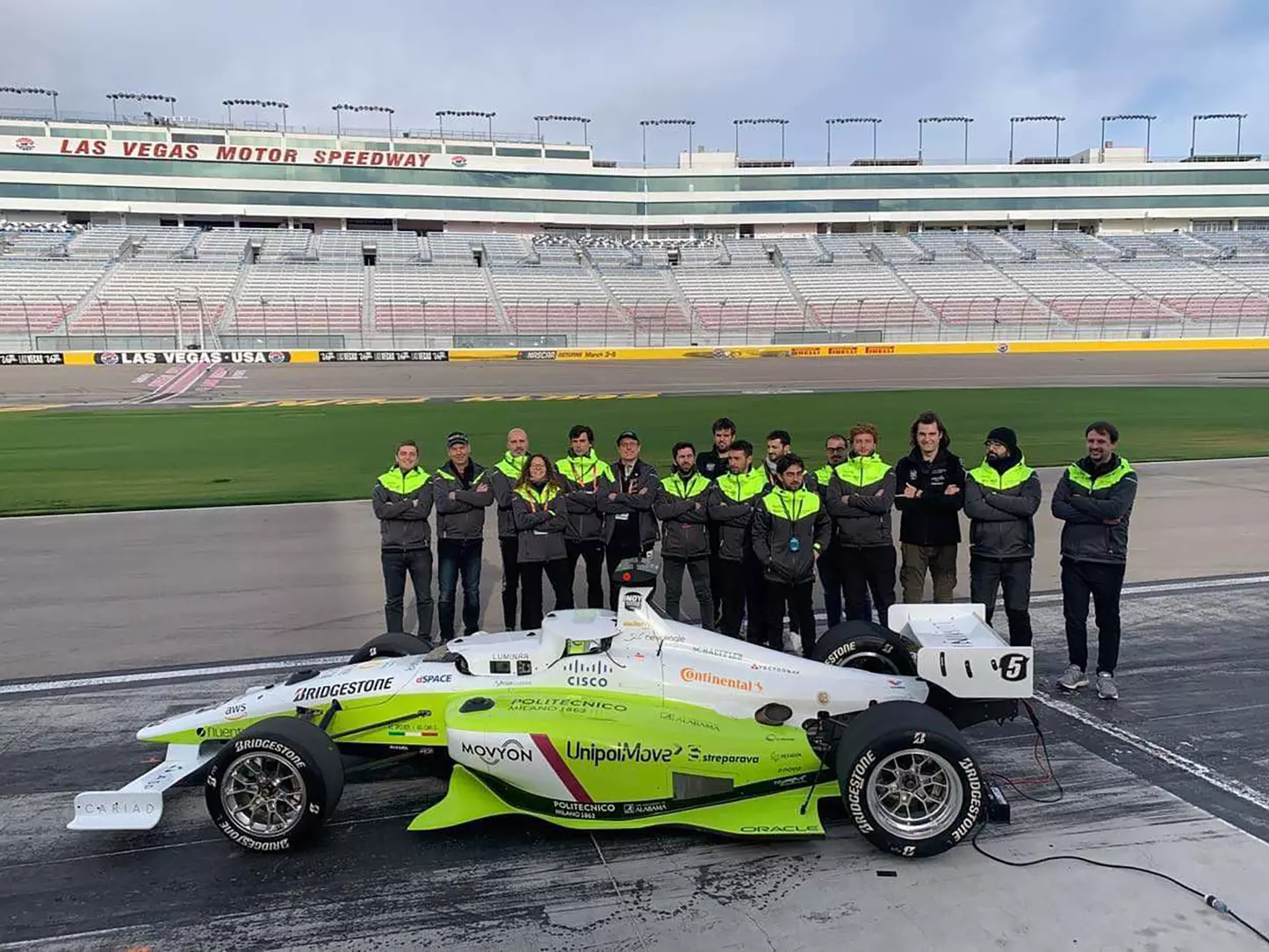A self-driving racing car that speeds and wins at 290 km/h. The future of the new mobility, which will one day no longer see us behind the wheel, also passes through here. “The one that in the near future, and precisely because of the limit to which we are pushing these vehicles, will allow us to refine autonomous driving in conditions even less complex than a circuit race,” predicts Sergio Savaresi, Professor of Automation Engineering at the Politecnico.
It all started three years ago with the world's first self-driving car competition, then, at the beginning of 2023, the PoliMOVE team from Milan’s Polytechnic University won the second edition of the Indy Autonomous Challenge (IAC) at the CES in Las Vegas, touching 300 km/h, a new world track record for a driverless car. PoliMOVE competed at the Las Vegas Motor Speedway against nine teams from 17 universities in six countries.
“A victory that represents an important step forward in terms of speed, race complexity and handling of challenging head-to-head situations”, explains Savaresi, who has been working for 20 years on automatic controls in land vehicles of all kinds, from electric bikes to cars and tractors.
All IAC cars in the race are the same (Dallara IL-15) and start from an equal footing on the hardware front, but also for algorithms and automation. No further mechanical, aerodynamic or engine modifications are permitted. Electronics and sensors are also the same. What makes the difference is the software.
These are real challenges to the limit between intelligent drivers (and not of remote-controlled cars) who make driving decisions during the competition. “We are very happy with this success, for the contribution of the Indy Autonomous Challenge and all the teams in advancing artificial intelligence technology applied to driving”, Savaresi commented, explaining that there are four aspects that are most difficult to define: “Vehicle localisation, which is done with GPS, cameras and lasers; trajectory definition, which includes planning overtaking and braking on straight stretches and curves; vehicle control at high speed; and finally the perception of the opponent in the racing space.”
“Four factors that will be crucial in building the autonomous car of the future, be it private or for public transport. We are exploring the limits of this technology in order to push it to the limit and master it. Also because in the case of racing, man-machine interaction does not exist”, explains Savaresi, according to whom the road to autonomous driving on our roads is still quite long. “We are talking about at least ten years and there is no shortage of critical issues. Not only on the technological front, a gap we are bridging with innovation. The biggest obstacle to putting these vehicles on the road will be the regulatory aspect: we do not accept that technology can fail like human beings (who cause and suffer accidents) and so until the system is perfect it will not be allowed and distributed.”
Some new-generation models (Volvo Ex90 or Mercedes S-Class, for example) already have advanced equipment, but Europe lacks clear regulatory enforcement. Whose responsibility is it in the event of an accident?
These are expensive technologies to which many countries around the world are devoting significant budgets. “One of the most important choices will be whether we can only use this technology on smart roads with the high costs and complexity this would entail or whether we can adapt our roads to this type of new mobility”, adds Savaresi.
In essence, the institutions and players involved in the construction of the new mobility must understand whether autonomous vehicles will only be able to circulate in controllable and infrastructured contexts (smart roads) designed specifically for the autonomous vehicle (and which dialogue with it by providing information on traffic, weather data, etc.) or whether it will be possible (on a technological, regulatory and social level) to adapt it to our roads where traditional vehicles also circulate.
The steps forward made in recent years, such as the compulsory equipment of new cars and the adoption of the black box for all new models from 2024, are not enough. These systems only record accident parameters and information collected immediately before, during and after the collision, i.e. data such as speed, braking, position and inclination of the vehicle on the road. To truly prepare for the arrival of Level 3 autonomous driving systems (for now), the whole context needs to be reviewed.
Having reached a first milestone, PoliMOVE has decided to raise the bar and will participate in Monza in the first race outside the USA, on 16-18 June. “A new challenge with new limits. We will be on the road and not on the classic oval circuit. A difficult new test in the service of tomorrow's autonomous driving.” Participation in the 1000 Miglia 2023 is the first step in the ‘presentation’ of the project, after which a year of development and experimental training of the A.I-driver will begin, on routes similar to the 1000 Miglia on municipal, provincial and state roads, and partly also motorway sections.
The project also aims to introduce autonomous driving to the general public. According to data from the Connected Car & Mobility Observatory of the Polytechnic University of Milan, Italian consumers today are perfectly divided into 50% already inclined to use an autonomous driving car and another 50% opposed.
